
Worldcarblog.com
2024 Cadillac Celestiq
Cadillac has been laboring in the shadow of European luxury brands for several decades, but it hasn’t given up: witness the company’s new electric flagship, the Celestiq sedan. This stunner shares a family resemblance to the new Lyriq EV SUV, but its sleek lines, sweeping roof, and bustle rear end give it dynamic proportions and jaw-dropping presence. Cadillac’s designers say that they have incorporated design elements from the past alongside high-tech systems that predict the future direction of the American luxury brand. The cabin is just as dramatic as the exterior styling, and it dazzles with brightly colored leather, a 55-inch digital dashboard, and Eames-inspired bucket seats. The Celestiq’s assembly line will be manned by a small team of craftspeople who will hand-build each one. Customers will design their own Celestiq when they order, similar to the Rolls-Royce method of bespoke production. Will that be enough to launch Cadillac out of the shadows? We’ll see once we get to drive one.
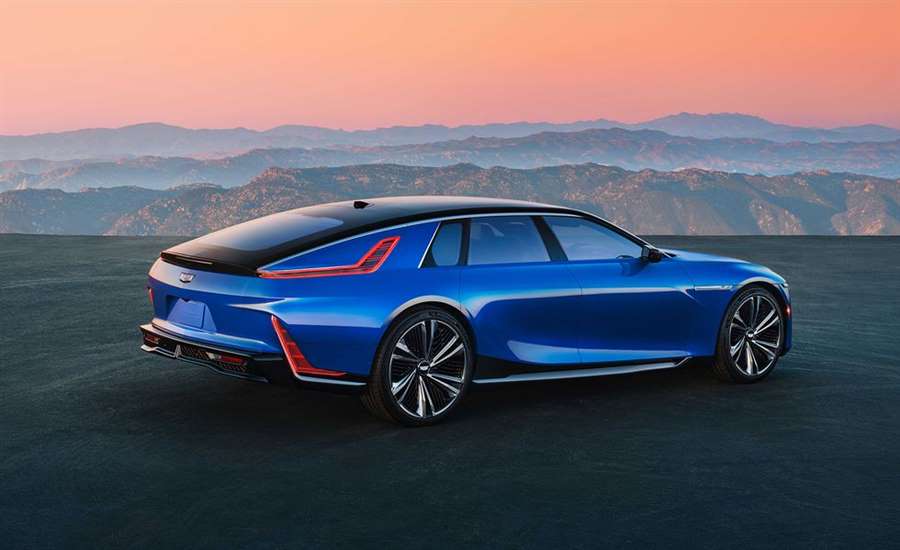
What's New for 2024?
The Celestiq is heading for production as an all-new model for Cadillac’s 2024 lineup but don’t expect to see this showstopper sitting on your local dealer’s showroom floor. Celestiqs will be special-ordered, tailored to each customer’s specifications, and likely will be delivered as discreetly as they are purchased.
The Celestiq will be a unique model in the Cadillac lineup for several reasons, not least of which is the fact that each one will be built to order. By hand. Celestiq (pronounced “cell-es-teek”) production will necessarily be limited as a result. Cadillac says there’s essentially no limit to customization opportunities, so we expect some buyers to create Celestiqs that turn heads today and and years from now when the cars turn up at future Pebble Beach Concours d’Elegance. Although Cadillac has yet to release pricing information for its new flagship sedan, the company has said that it will start “north of $300,000.” Customization choices will no doubt push prices even higher.
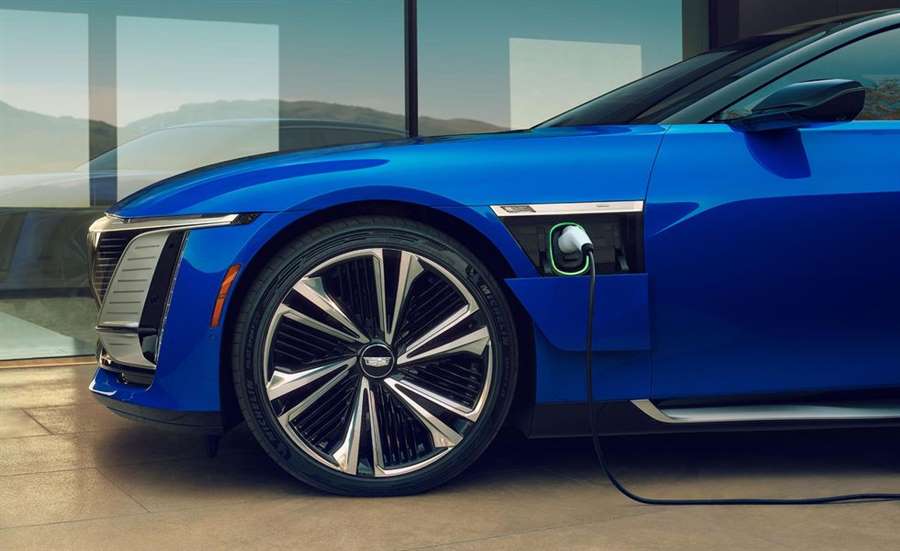
EV Motor, Power, and Performance
While much of the Celestiq is highly customizable, its powertrain is not: All models come with a dual-motor all-wheel drive electric powertrain that Cadillac estimates will make around 600 horsepower. The company says that’s enough to launch the Celestiq to 60 mph in 3.8 seconds, which would put it in the same league as entry-level models of the Audi e-tron GT and the Porsche Taycan. Rather than attempting to be a big sports sedan, we expect the Celestiq to take a much tamer, comfort-oriented approach to road manners—more Bentley than Blackwing. An adaptive air suspension system is standard, as is a rear-wheel steering feature that helps the long sedan maneuver more lithely in tight spots and swing tighter u-turns. It will be a while before we are able to test-drive the Celestiq, but when we do we'll update this story with driving impressions and test results.
The Celestiq will draw its electrons from an Ultium battery pack that’s large enough to deliver around 300 miles of EPA estimated driving range per charge. While that’s likely to be enough for most drivers, it’s already far behind the best. For reference, the longest driving range available in a Tesla Model S is a 402 miles, and the new Lucid Air sedan boasts a range of up to 516 miles. The Celestiq is capable of recharging on a DC fast charging connection and Cadillac says that on a 200-kW connection the battery can be juiced with 78 miles of range in just 10 minutes.
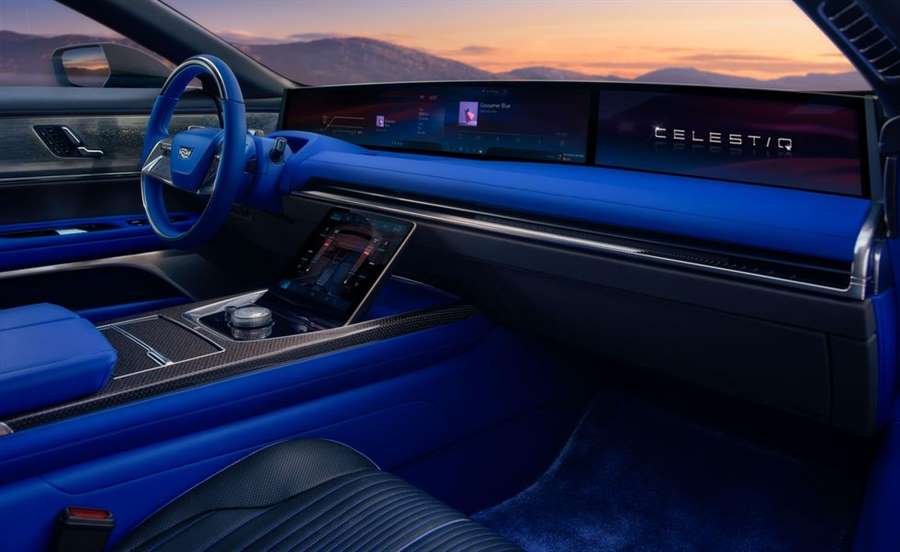
Fuel Economy and Real-World MPGe
There's no information yet about the Celestiq's fuel-economy ratings, and we likely won't know for some time just how efficient this electric luxury sedan will be. For more information about the Celestiq's fuel economy, visit the EPA's website.
Interior, Comfort, and Cargo
Starting with an instrument panel that is essentially one giant digital display, the Celestiq's cabin is a technological powerhouse. Four bucket seats mean each occupant will enjoy their own bubble of space. The roof is made from an electrochromic glass panel that can be adjusted from transparent to opaque, and every passenger can control their own little corner of the sky. Buttery leather, available in practically any color, lines much of the cabin, and other interesting materials are used throughout as accents. Brushed metal trim intermingles with ecologically sourced open-pore wood, which has been perforated to allow sparkles of light to shine through from the ambient interior lighting system. The cargo area is also lined with leather, is generously sized, and features attractive metal inlays on the floor. The Celestiq, by the way, is a hatchback rather than a traditional three-box sedan, similar to cars like the Audi A7 and Kia Stinger.
Infotainment and Connectivity
Most luxury cars boast large infotainment displays measuring 10.3 or 12.3 inches, but the Celestiq’s is all of w 55.0 inches spanning the entire width of the car's dashboard, much like Mercedes’ new hyperscreen. Rear-seat occupants can also enjoy their own 12.6-inch displays for watching movies, checking the internet, or controlling the car's stereo system. Speaking of stereo, the Celestiq boasts a 38-speaker AKG Studio Reference stereo system with three amplifiers and 3D surround sound.
Safety and Driver-Assistance Features
All Celestiqs will come with a host of driver-assistance features from basics such as automated emergency braking to advanced hands-free driving via GM’s new Ultra Cruise system, the next generation of the company’s Super Cruise hands-free driving technology. For more information about the Celestiq's crash-test results, visit the National Highway Traffic Safety Administration (NHTSA) and Insurance Institute for Highway Safety (IIHS) websites. Key safety features include:
Warranty and Maintenance Coverage
Like the rest of the Cadillac lineup, the Celestiq will come with a powertrain warranty that trumps that of other luxury sedans. Cadillac currently covers the first dealer maintenance visit, but rivals such as the BMW 7-series offer longer periods of free maintenance. We would expect that the Celestiq's battery warranty will match that of the Chevy Bolt's at eight years or 100,000 miles.
Limited warranty covers four years or 50,000 miles
Powertrain warranty covers six years or 70,000 miles
Electric components are covered for eight years or 100,000 miles
Complimentary maintenance is covered for the first visit
Source: caranddriver.com
The 7-seater Mazda CX-80 will arrive in Europe in 2023.
For those who need more space in the passenger cabin.
The MX-5 is no longer the only rear-wheel drive Mazda on sale in Europe, as the CX-60 recently arrived in showrooms on the Old Continent. For those who need more space in their vehicle, Mazda has confirmed that the three-row CX-80 will launch in 2023, as a larger seven-seat variant of the CX-60.
Technical specifications are yet to be revealed, but the two SUVs are likely to be stylistically identical, apart from the difference in body length.
Not only does the CX-60 ride on a rear-wheel drive platform, it's also the first Mazda to use a new family of inline 6-cylinder petrol and diesel engines complemented by a plug-in hybrid setup.
The Mazda CX-80 will likely inherit the powertrains and the option of either standard rear-wheel drive or optional all-wheel drive. Power will be transmitted through an eight-speed automatic transmission.
How big will the CX-80 be? Mazda isn't saying yet, but we'll remind you that the standard two-row CX-60 is 4,740mm long and has a 2,870mm wheelbase.
In its heaviest configuration, which is PHEV, the CX-60 weighs almost 2,100 kilograms. Needless to say, the CX-80 will be slightly heavier as a result of the body being extended to accommodate the third row of seats.
Not electricity: Here is the fuel of the future according to the head of BMW
BMW President Oliver Zipse believes that the hydrogen market is a few years behind electric power, but that it will soon become a major player in the fuel that powers cars.
The fact is that the Bavarian company has turned to electrification, that more and more vehicles with the "i" badge, but also that BMW has made a promise that half of the new cars of this brand will be electric by 2030, however, the president of this company believes that hydrogen will become the most desirable source of driving power for a car.
Oliver Zipse told reporters that the hydrogen market is a few years behind electricity, but will soon become a major player. "After the electric car, which has been around for about 10 years and is growing fast, the next trend will be hydrogen. "When it becomes more flexible, hydrogen will become the most modern fuel," Zipse said in an interview with Bloomberg.
BMW is one of the few manufacturers to develop a hydrogen-powered car in the 21st century, and recently announced the iX5, a hydrogen-powered X5 SUV that will go into production at the end of this year. In addition to the Bavarian company, Mercedes, Honda and Toyota also dealt with hydrogen as a fuel, and the Japanese couple officially offered fuel cell vehicles a few years ago.
However, as for BMW's hydrogen ambitions, they are not limited to the BMW brand and could extend to other brands within the BMW Group. The night before the unveiling of the new electric Rolls-Royce, the head of the British luxury marque, Torsten Muller-Otvos, said the idea of a hydrogen-powered Rolls-Royce was "right on".
"Using hydrogen? Why not? I wouldn't rule that option out. There is a belief within the group that this may be the long-term future," said Muller-Otvos.
As Auto Klub reports, Oliver Zipse still thinks that there is no energy source so perfect that all others should be ignored. So electricity makes more sense in urban areas in developed countries where there is easy access to charging infrastructure, while hydrogen might be better in other situations.
"It's a dangerous thing to say that in the UK around 2030 or in the UK and Europe in 2035 there should be only one powertrain." For customers, for industry, for employment, for the climate, from any angle you look at it, it's a dangerous road," Zipse said in an interview with Bloomberg.
First drive: Mazda CX-60 – luxury in every way
Mazda has joined the manufacturers that offer a large SUV according to European standards, or a medium SUV according to American standards. In Leverkusen, we tested the most powerful version, which is also the most powerful production Mazda of all time.
In recent years, it has been obvious that Mazda is aiming for the premium segment and it has really become that, not only in terms of luxury, quality of finish, rich equipment, but also in terms of technology.
It is famous for technical solutions that defy general trends; then when everyone was pushing for downsizing, Mazda was increasing engine displacement.
Today, everyone is following in the footsteps of Mazda's engineers, while they prepare a concept in their laboratories that seriously disturbs other premium manufacturers.
The new issue of Auto magazine is on sale, read the driving impressions of the latest car models.
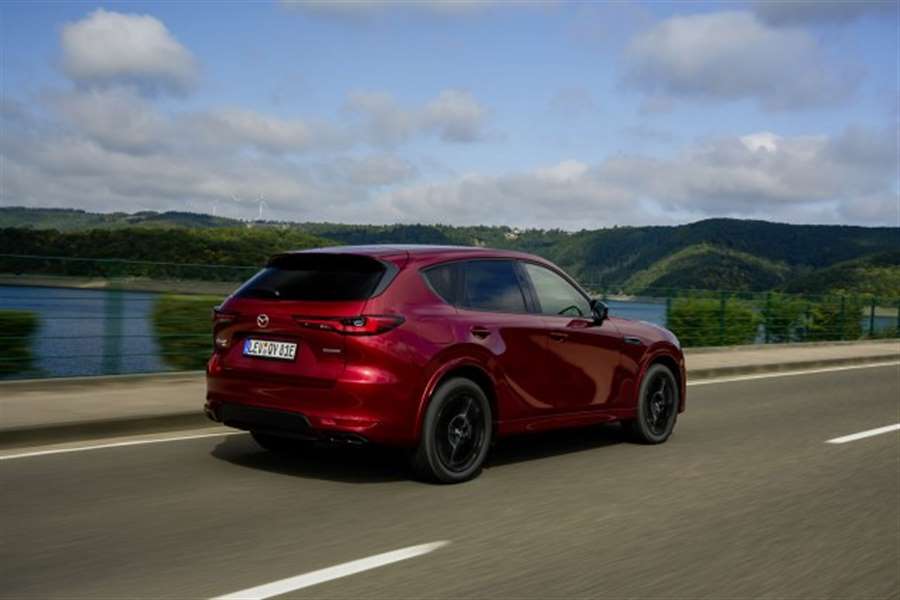
To show us what it's all about, Mazda invited us to its European headquarters in Leverkusen.
In the parking lot, we were greeted by a large number of copies of the latest model - the Mazda CX-60.
Before the ride, we were given a short presentation where we were introduced to the technology. It is definitely clear that this is a premium approach.
Mazda has developed a completely new mechanical platform for this model with a longitudinally mounted engine and primarily rear-wheel drive.
Of course, four-wheel drive versions are also available. The show of power does not end there.
For this platform, including the Mazda CX-60, engines of large volume are provided! It will be a three-liter e-Skyactiv X gasoline and a 3.3-liter e-Skyactiv D diesel.
Both have six cylinders and mild hybrid technology with a voltage of 48 volts.
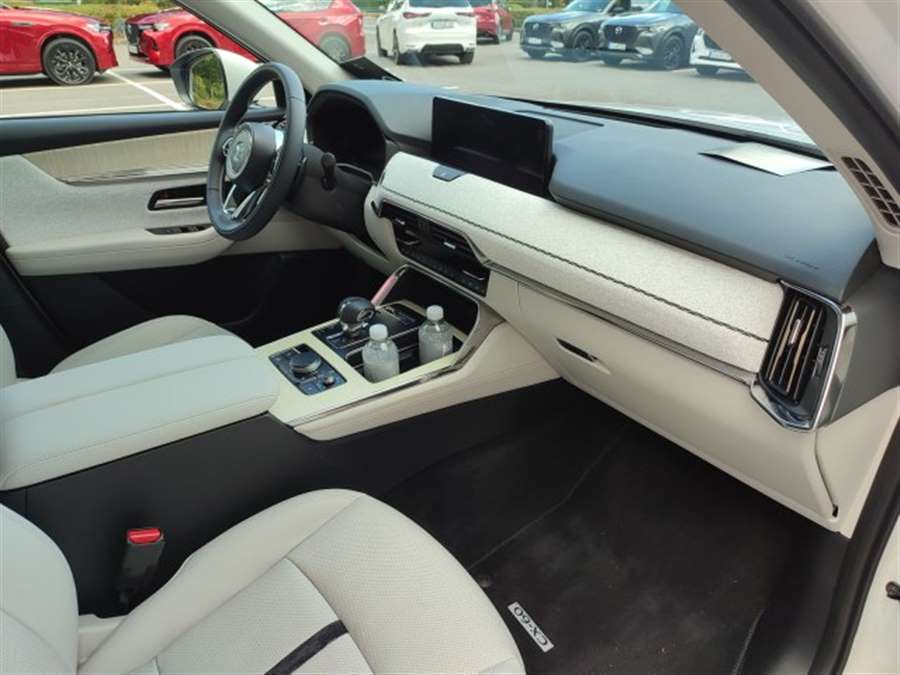
While the specifications for the petrol are not yet known, they are for the diesel. It will have two power levels. The weaker one, of 200 HP, will have rear drive, while the more powerful one of 254 "horses" will be available exclusively with four-wheel drive.
The specialties don't end there either; all of these engines will have an all-new eight-speed automatic transmission without a torque converter.
What Mazda has prepared for a short press trial is the CX-60 with a plug-in hybrid combination of a 2.5-liter naturally aspirated gasoline engine with 191 hp and an electric motor with 175 hp.
The total power of the system is 327 "horses", making it the most powerful serial Mazda of all time.
Immediately after the presentation, we get into the car. More precisely, we climb into it, since it is quite high.
This is now the brand's largest SUV model in Europe. The Mazda CX-60 is positioned above the Mazda CX-5 in terms of its dimensions, which can be felt not only in terms of length, but also width.
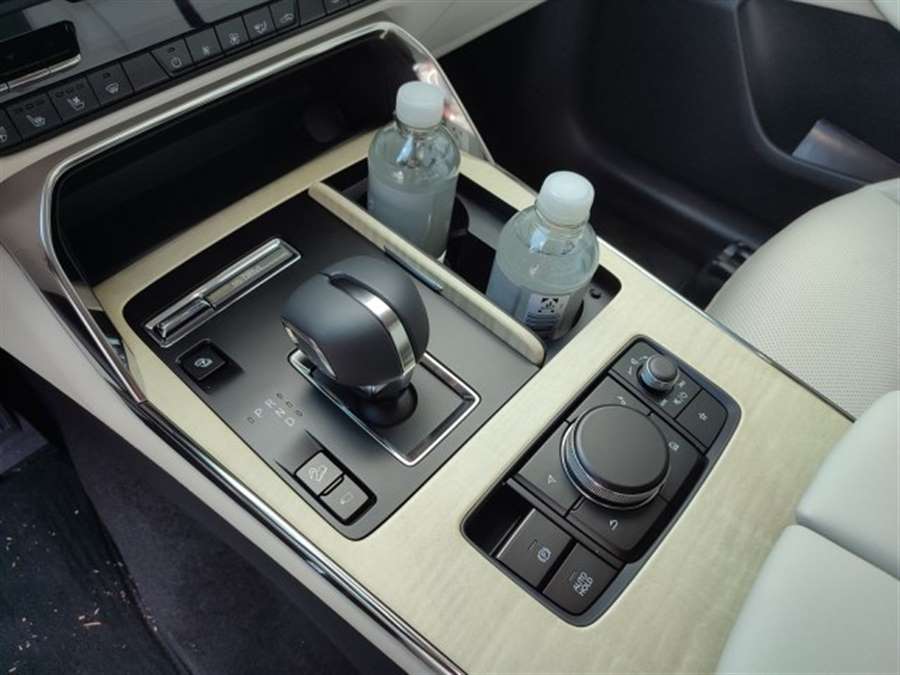
This is perhaps most easily visible in the really wide central ridge between the driver and front passenger, while the passengers in the front seats have 44 mm more shoulder room and those in the back even 50 mm more.
Speaking of the difference in dimensions, it should also be said that in the rear, the Mazda CX-60 is larger than the CX-5, so the tailgate is 35 mm wider.
The trunk offers 570 liters of volume, which is more than enough for large amounts of luggage.
The cabin is definitely premium quality; there are upholstered surfaces everywhere, including those lined with real wood, with plenty of interestingly textured materials, especially on the dashboard.
The fineness of detail and finish also leaves the highest impression.
Already the settings of the driver's position let us know that the technology is at the top level; as with some German brands, the driver's height is entered here, and the sensors do the rest of the work and adjust the ideal position of the seat, steering wheel, mirrors and head-up display according to eye height.
We immediately connect the phone; this is the first Mazda with wireless Android Auto connectivity.
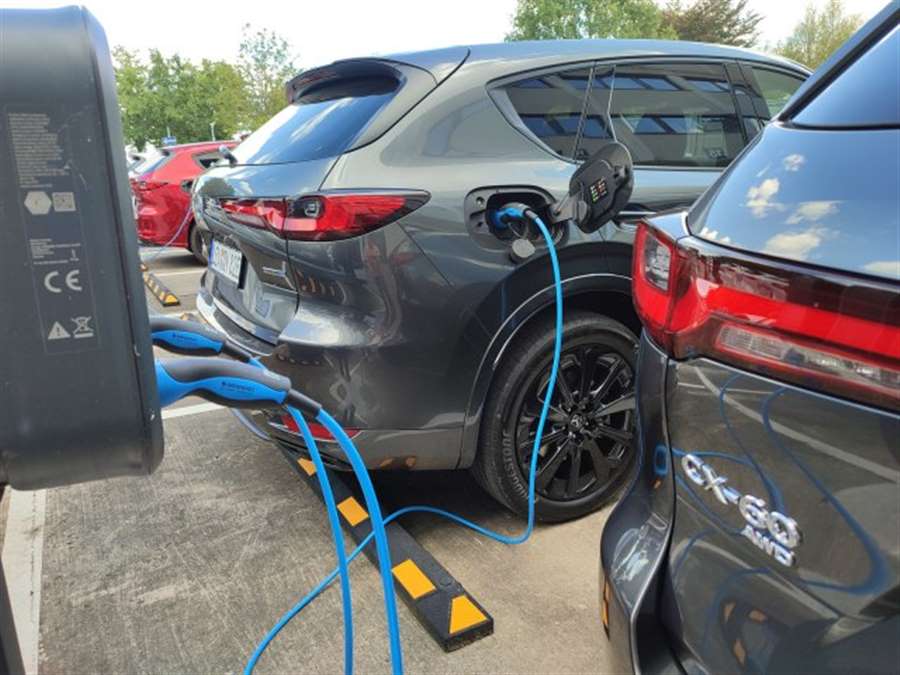
Larger dimensions are particularly noticeable in city driving, and the camera and parking systems are very helpful when maneuvering.
Plag-in hybrid, weighing about two tons, does not feel quite at home on uneven city roads, due to the wheels with low-profile tires with a diameter of 20 inches, due to the suspension, which does not have adaptive shock absorbers zera a bit harder than we would expect.
The steering is surprisingly direct for an SUV, which is especially noticeable when you get out onto a winding country road or highway. This is very important, especially considering the maximum 327 "horses" available to the driver.
Precisely because of the powerful engines but also the elevated concept, Mazda has developed a new torque vectoring system.
At no point does the "nose" or rear end feel like it's running away, even when accelerating in a corner.
Moreover, the trajectory in the curve is corrected by the imperceptible activation of the brake at a certain wheel, which the driver does not notice at all, but seriously affects the stability.
It can be said that this is a great combination of SUV, sports and environmental vehicle. Power is transmitted to all four wheels, but the rear drive is primary.
Only if the need arises, up to 50 percent is transferred to the front axle.
This applies to all modes, from purely electric to classic, when the SUS engine is activated.
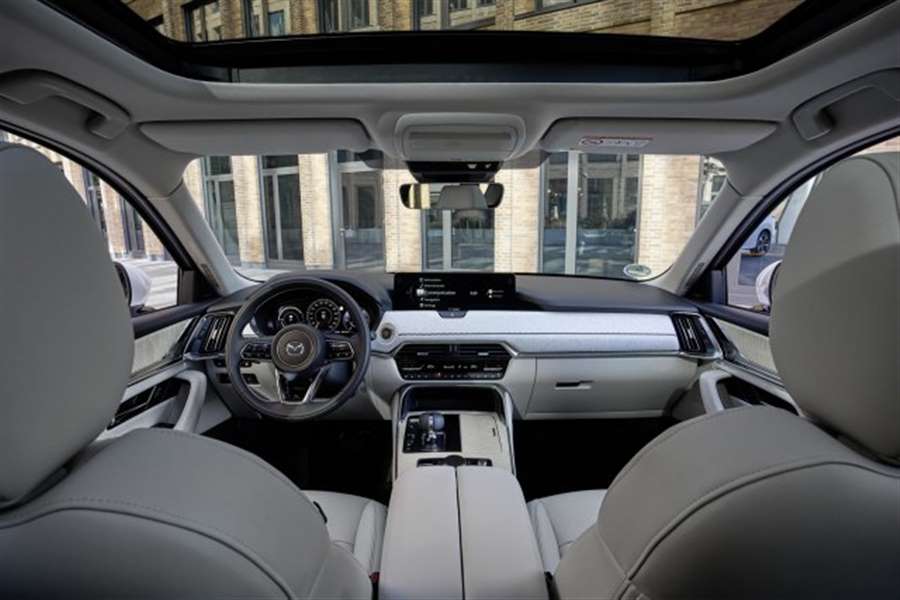
Considering that we are driving cars that are practically test series, a slight jerk is felt for a moment when changing the mode, i.e. when switching from purely electric to gasoline and vice versa.
In general, it is very quiet in the cabin due to the excellent sound insulation, and the silence can only be disturbed by the high-quality sound system of the Bose brand, with well-designed acoustics.
The test route was short, so we didn't have the opportunity to make sure of the real range on electricity alone, especially since we drove mostly on local roads.
Mazda promises up to 68 kilometers in the city and 63 on the highway, which is not exactly a top result, but for most buyers it is quite enough for everyday driving.
Otherwise, the electric motor is in the gearbox, so the complete construction is very compact.
In order to lower the center of gravity, the batteries are embedded in the floor. All this affected the driving characteristics.
Apart from highways with a speed limit of 100 km/h, the real testing ground for the Mazda CX-60 is the "autobahn".
You guessed it, we were looking forward to the section with no speed limit. Although they are very short due to the large crowd, they are quite enough to push the hybrid drive to its limit.
Full gas and four-cylinder gasoline in combination with an electric motor give their maximum. Only now, the petrol can be heard more clearly, and with a rather powerful sound, which is usually not the case with hybrids.
It was relatively imperceptible until the throttle was "pathosed", but now... You can simply feel the imposing power that accelerates the over two-ton car to "hundred" in just 5.8 seconds.
The fact that it accelerates strongly up to the electronically limited 200 km/h, and then suddenly stops, like when you set the speed limiter, shows how powerful the system is.
This is not so bad, most have started to limit the speed to 180 km/h...
Until the big six-cylinder gasoline and diesel engines arrive, the plug-in hybrid is the only and at the same time the most powerful and fastest option.
Whichever option you choose, low registration costs await you, given that there is no tax on the use of motor vehicles for hybrids, even if they are light hybrids.
In any case, Mazda has definitely provided its customers with maximum comfort, practically at the level offered by the famous German trio, and at really affordable prices.
It is not yet known how much it will cost here, but it is certain that it will be cheaper than in Germany, where it will cost from 47,390 euros.
Electric up to 140 km/h
Considering that it is a plug-in hybrid, the Mazda CX-60 allows driving only on electricity with a range of 68 kilometers in the city cycle according to the WLTP standard, i.e. 63 kilometers on local roads.
Of course, if you drive 140 km/h, which is the maximum on electricity, the range will be somewhat less.
The first model on a new mechanical platform
The Mazda CX-60 is just the first model on the new platform with a longitudinally mounted engine and primarily rear-wheel drive.
A longer Mazda CX-80 with seven seats is expected soon, but also other surprise models.
Fast charging
Like most plug-in hybrids, the CX-60 allows charging at 11 kW chargers with a power of up to 7.2 kW.
A completely empty battery is charged to 100 percent in two hours and 20 minutes, which is quite enough to fill up a good part of the capacity while you are shopping.
Charging takes longer on the home Shuko socket in the garage, but it is certain that it can be charged during the night.
By the way, the maximum range of 63, that is, 68 kilometers of electric range in the city is included in the average gasoline consumption, hence the declared 1.5 liters per 100 kilometers.
Specific gearbox
Mazda has developed a specific eight-speed automatic transmission specifically for this platform that is characterized by the absence of a torque converter.
However, its mode of operation is similar - it changes gears via planetary gears and a multi-plate clutch, but it does not have converter hydraulics as an input clutch, but a multi-plate clutch in combination with an integrated electric motor and generator performs this function.
By replacing the torque converter with a clutch, torque is transmitted directly, similar to a manual transmission. In addition, friction transmission and clutch cooling have evolved to smooth start-up and high efficiency were achieved.
The Mazda CX-60's hybrid powertrain enables the independent combination of gasoline and electric motor power.
For example, when driving on electricity, the gear change is gently felt, just like when driving on gasoline, or with the help of both engines at the same time.
Such a solution enables a great saving in space.
Specifications
- Mazda CX-60 E-Skyactiv PHEV AWD
- Engine: 4 cylinders, longitudinally mounted
- Volume: 2488 ccm
- Power: 141 kW (191 hp) at 6000 rpm
- Max. about. torque: 261 Nm at 4000 rpm
- Electric power engine: 129 kW (175 HP) at 5500 rpm
- Max. about. torque el. engine: 270 Nm
- Total system power: 241 kW (327 hp) at 6000 rpm
- Max. about. system torque: 500 Nm at 4000 rpm
- Battery: Li-Ion, 17.8 kWh
- Battery mass: 176 kg
- Battery voltage: 355 V
- Gearbox: automatic, 8 degrees
- Dimensions (L/W/H): 4745/1890/1685 mm
- Intermediate shaft. distance: 2870 mm
- Trunk: 570/1726 l
- Tank: 50 l Weight: 2055 kg
- Max. speed: 200 km/h
- Acceleration 0-100 km/h: 5.8 l/100 km
- Combined consumption: 1.5 l/100 km
- CO2 emission: 33 g/km
- Electric range: 68 km city, 63 km outside the city
2024 Rolls-Royce Spectre
Rolls-Royce is taking its ultimate-luxury ethos to a new realm with the all-electric 2024 Spectre coupe. James Bond probably wouldn't toast the new model with one of his shaken-not-stirred signature martinis given his history of battling the international crime organization known as Spectre. But he might want to drive the regal new coupe nonetheless. The Spectre rides on the same platform as the Phantom sedan and Cullinan SUV but is propelled by a fully electric powertrain consisting of two electric motors that pump out a combined 577 horsepower. The driving range is estimated to be around 260 miles per charge, which does not place the Spectre among the long-range EV cohort with less-expensive rivals such as the Tesla Model S and the Lucid Motors Air. But buyers with the $400,000 or so available to buy a Spectre aren't likely to road trip when their private jet is always standing ready at a nearby airfield. The Spectre is Rolls-Royce's first in a series of EVs, and the company says that its gasoline-powered models will be phased out of the lineup and replaced entirely with EVs by 2030.
What's New for 2024?
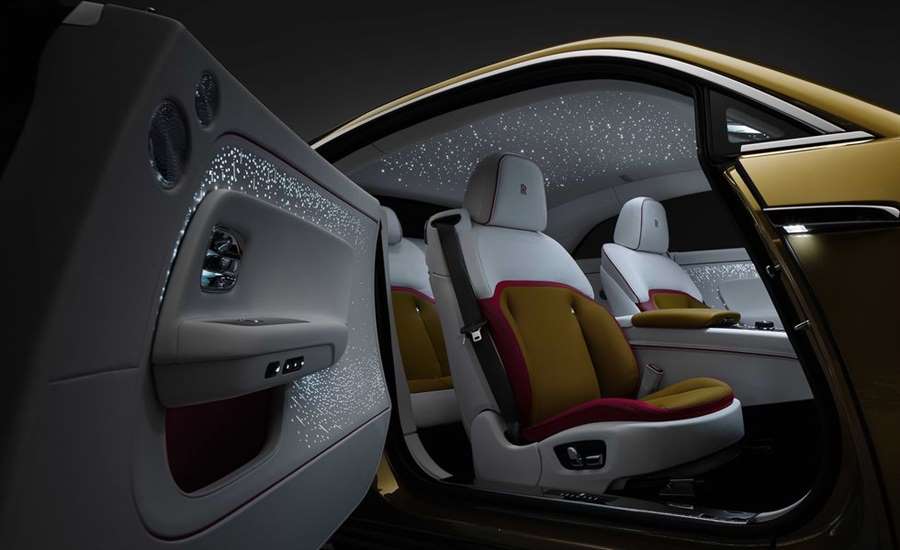
The Spectre is a new addition to the Rolls-Royce lineup and its first customers can expect to take delivery by the end of 2023.
Rolls-Royce hasn't released much information about the Spectre yet, including its price tag. We expect to see classic Rolls-Royce features and options on the new coupe, including a series of highly-customizable packages offered through the company’s Bespoke design service.
EV Motor, Power, and Performance
All Spectres will come with a dual-motor electric powertrain with 577 horsepower and 664 lb-ft of torque. Rolls-Royce says that's enough to move the 6559-pound coupe to 60 mph in 4.4 seconds. You may scoff at that estimate and point to the Tesla Model S Plaid that hit 60 mph in 2.1 seconds in our testing, but we'd be quick to remind you that Rolls-Royce's brand ethos is more about quiet cruising than mind-bending performance. Rolls-Royce has installed adaptive suspension to ensure an appropriately isolated ride, and the engineers also made room for a massive amount of sound-deadening material that Rolls says will ensure the cabin remains whisper quiet.
Range, Charging, and Battery Life
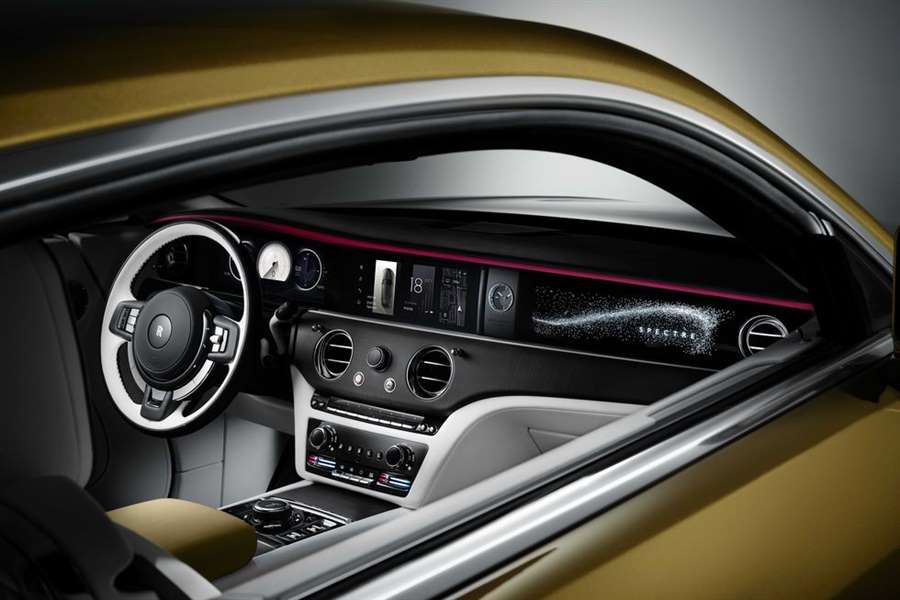
Rolls-Royce hasn't said how large the Spectre's battery is but it's estimating a driving range of about 260 miles per charge. DC fast-charging should be possible, but we'd guess that most Spectre buyers will have a charging system installed at their estates so they aren't forced to wait around in the parking lot of a Walmart like the rest of us.
Interior, Comfort, and Cargo
The Spectre's cabin offers space for four with bucket seats in both rows. Anyone who's familiar with Rolls-Royce's current interior design will find a similarly sybaritic one here, although the company has added several design features that are unique to Spectre. For example, in addition to the brand's signature starry-night headliner, the Spectre's door panels rock a similar twinkle with tiny LED lights sparkling in the area surrounding the armrests. We don't yet know all the details or have a list of options and features but the Spectre should be available with a seemingly endless array of personalization options and material choices.
Source: caranddriver.com
The new king of electric cars has arrived: The first electric Rolls-Royce has three tons
The Specter luxury coupe marked the British prestige brand's entry into the electric race.
Rolls-Royce's entry into the electric car market works in its own way. They can simply afford it, that is, they can be sure that they will easily extract a few hundred thousand euros from their fans for a huge electric coupe weighing less than three tons.
Specifically, the Specter weighs 2,975 kg, making it one of the heaviest production cars on the market right now. Of course, the Specter is not a small car, so the distance between the axles is as much as 3,210 mm.
The supporting structure is aluminum, but the burden of the huge battery cannot be hidden.
The 700 kg battery is a nice ballast in the floor of the vehicle, and with a capacity of more than 100 kWh, it enables a solid driving autonomy of 520 km, according to WLTP.
The electric drive produces 585 hp and 900 Nm, which apparently in RR they consider sufficient to satisfy the appetite of future owners, but also some basic standards of the brand.
After all, the company is no stranger to electricity because Charles Rawls was thinking about an electric car more than 120 years ago. In 1900, he bought an electric vehicle and was mesmerized by the feeling of driving without noise, vibration and stench.
{vembed Y=0CndFn82-Pg}
On paper, it reaches 100 km/h in 4.5 seconds, but that really matters less in a car of this caliber.
Yes, the Specter is fast, but it should be experienced more like a road version of a luxury yacht, just as the rear of the car suggests.
Equipped with "Magic carpet ride" chassis and Planar suspension, the Specter will ride the mountain roads between Nice and St. Tropez like on rails.
It is not surprising that it was precisely on those roads that he performed the final tests and fine-tuning of the prototype before the start of production.
No need to waste words on the design. Suffice it to say - a pure classic, but also a never-wider LED-illuminated front fascia.
And yes, the lights are double, where the daytime ones are extremely thin, and the main ones are hidden under them. It's a recipe recently introduced by BMW and it didn't go over well with critics. It will probably pass here.
BMW revealed how long it will keep manual transmissions
BMW customers are still looking for manual transmissions on the forums.
Manual gearboxes are slowly giving way to automatics. They are more comfortable and faster for drivers, and today they are at such a level of development that they do not increase fuel consumption.
CarBuzz was at the BMW M Festival at the Kyalami Grand Prix circuit in South Africa where he spoke with the head of the BMW M division, Frank van Mel. One of the key questions was how long will manual transmissions be available in BMW models?
"Unfortunately, the manual transmission is not so widespread anymore. It is more important in certain segments, namely the M2 and M3 models, as well as the M4. We continue to offer manual transmissions for those cars and those versions will be sold until the end of this decade," he said. van Mel.
Timo Resch, vice president of customer, brand and sales for BMW M, added that the company is monitoring the activities of customers who are petitioning online and voting, mostly asking for BMW to keep the manual transmission.
Resch said the engineers asked why anyone would need a manual transmission when automatics are faster, but then the marketing department simply told them: the fans demanded it.
In M models, the manual gearbox is still "living", but in other, more conventional models, it is increasingly giving way to automatics.

















